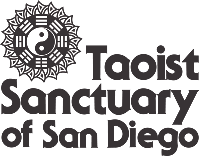Traditional Chinese Medicine
Traditional Chinese Medicine (TCM) is a system of healing based upon the Chinese philosophy of the correspondence between Nature (Tao) and human beings. The principle of microcosm-macrocosm is based upon the observation of several thousand years that Nature has a vital effect upon the health of people. Another fundamental principle is that of Yin and Yang, the two basic complementary energies of Nature. All of the manifestations of nature are thought to be composed of a specific balance of these two forces. Health is also thought to be due to the appropriate balance of yin and yang in the body. This balance is reflected in many ways,but the most fundamental is that of the relationships of Qi, the vital force or energy which flows through a system of channels and conduits in the body, much like the earth`s magnetic field. The Qi is responsible for activating and maintaining all of the physiological functions of the body.
The methods of TCM all involve different approaches to altering the circulation of Qi in order to allow the body to naturally heal itself. Acupuncture uses needles to puncture specific locations (acupoints) along the channels that conduct the qi through the body. Moxibustion uses the application of heat in the form of a burning herb called moxa on the acupoints or on regions of the body. Tuina Bodywork uses hand techniques on the acupoints and the musculoskeletal system. Herbal medicine uses plant, animal and mineral substances to activate internal relationships that effect the balance and circulation of the Qi. This also includes the use of special diets. Qi Gong is the use of exercises and meditation to change the circulation and production of Qi. It can also be performed as a therapeutic method by the directing of the practitioner’s Qi to a patient in order to directly manipulate the circulation of Qi.

